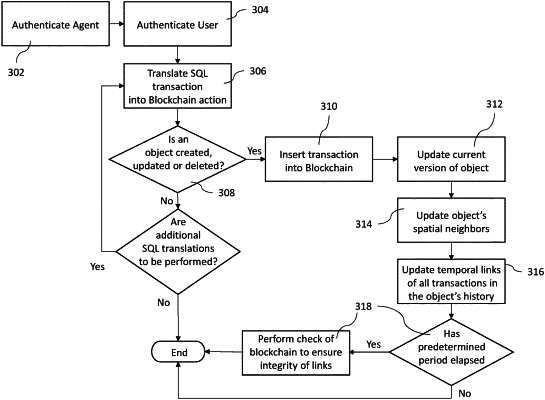| CPC G06F 16/2379 (2019.01) [H04L 9/0637 (2013.01); H04L 9/50 (2022.05)] | 17 Claims |

|
1. A database management comprising:
at least one processor;
at least one memory storing:
a relational database, the relational database comprising a plurality of data objects; and
instructions which, when executed by the at least on processor, cause the data base management system to execute an agent providing a domain-specific programing language user interface to the relational database,
wherein, in response to the creation, modification or deletion of at least one data object within the relational database, the agent is configured to:
insert a transaction onto a blockchain;
update the current version of the at least one data object, including updating at least one space-time link within the data object;
update the current version of the data objects neighboring the at least one data object in the relational database, including updating at least one space-time link within the data objects neighboring the at least one data object; and
update a temporal last link of the transactions in the at least one data object's history to reflect the inserted transaction, and
wherein, in response to receiving a query at the database management system, the agent is configured to perform the query of the relational database on the blockchain using the at least one space-time link within the at least one data objects and the at least one space-time link within the data objects neighboring the at least one data object to traverse the blockchain from the at least one data object to the data objects neighboring the at least one data object.
|